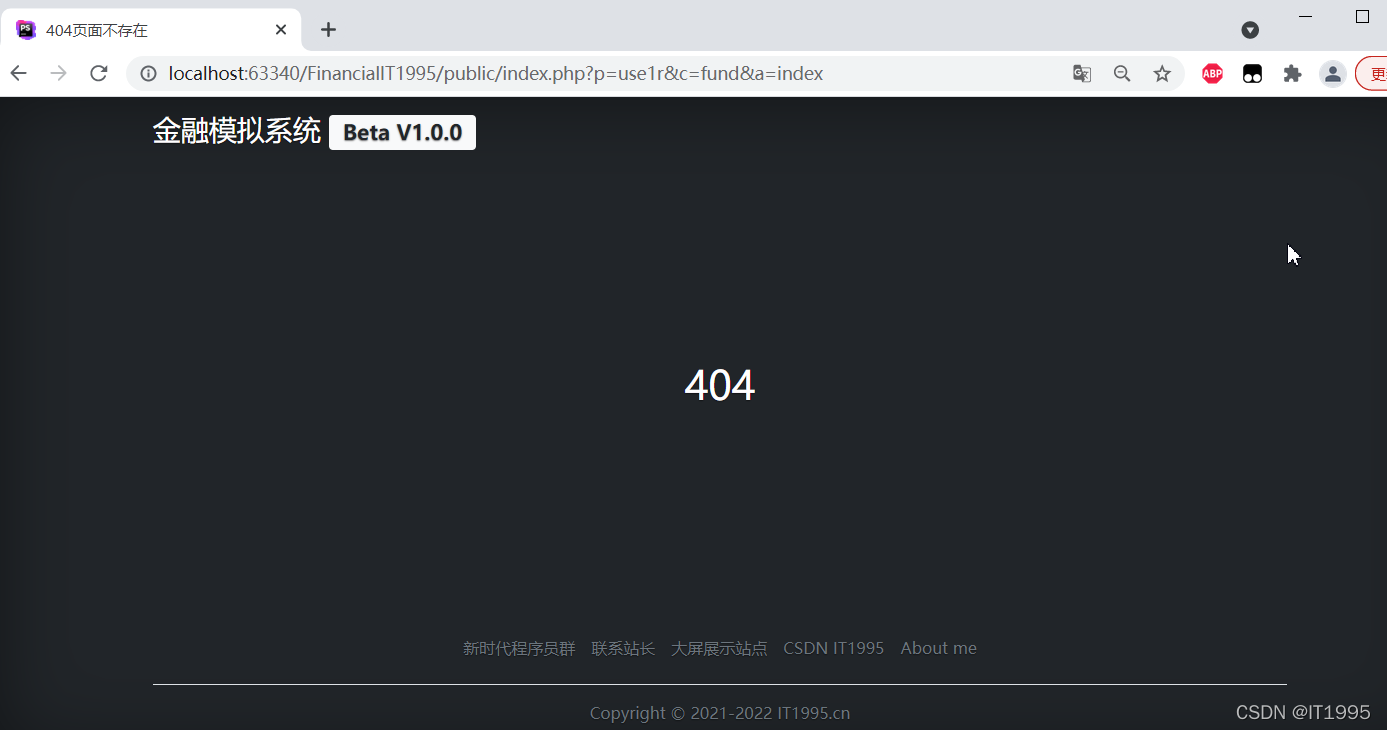这里我用的是自定义MVC,所以统一错误页面很简单,自定义MVC框架在这篇博文
PHP笔记-自定义MVC框架_IT1995的博客-CSDN博客
当输入任意不存在的页面时:

这里在
private static function setDispatch(){
try{
$controller = "\\" . P . "\\controller\\" . C . "Controller";
$action = A;
$object = new $controller;
$object->$action();
}
catch (\Throwable $e){
//进入 404页面
//echo "Message: " . $e->__toString();
//这里开始 输出到日志
//这里结束 输出到日志
self::load404Page();
$controller = new PageNotFindController();
$controller->index();
}
}这里使用__toString()可以输出字符串,然后将其输入到服务器日志里面,就能记录日志,不被心怀不轨的人发现了。
这里有一个要注意的地方就是Throwable
/**
* Throwable is the base interface for any object that can be thrown via a throw statement in PHP 7,
* including Error and Exception.
* @link https://php.net/manual/en/class.throwable.php
* @since 7.0
*/
interface Throwable extends Stringable这里可以知道,他可以捕获错误和异常,是php7中新引用的。
其中load404Page()函数如下:
private static function load404Page(){
$controllerFile = APP_PATH . "user/controller/PageNotFindController.php";
if(file_exists($controllerFile)){
include $controllerFile;
}
}PageNotFindController.php
<?php
namespace user\controller;
use core\Controller;
class PageNotFindController {
protected $smarty;
public function __construct(){
if(!class_exists("Smarty")){
include VENDOR_PATH . "smarty/Smarty.class.php";
}
$this->smarty = new \Smarty();
$this->smarty->template_dir = APP_PATH . "user/view/";
$this->smarty->compile_dir = RESOURCES_PATH . "views";
}
public function index(){
$this->smarty->display("page404.html");
}
}这里仅仅能实现功能,提供一个思路。